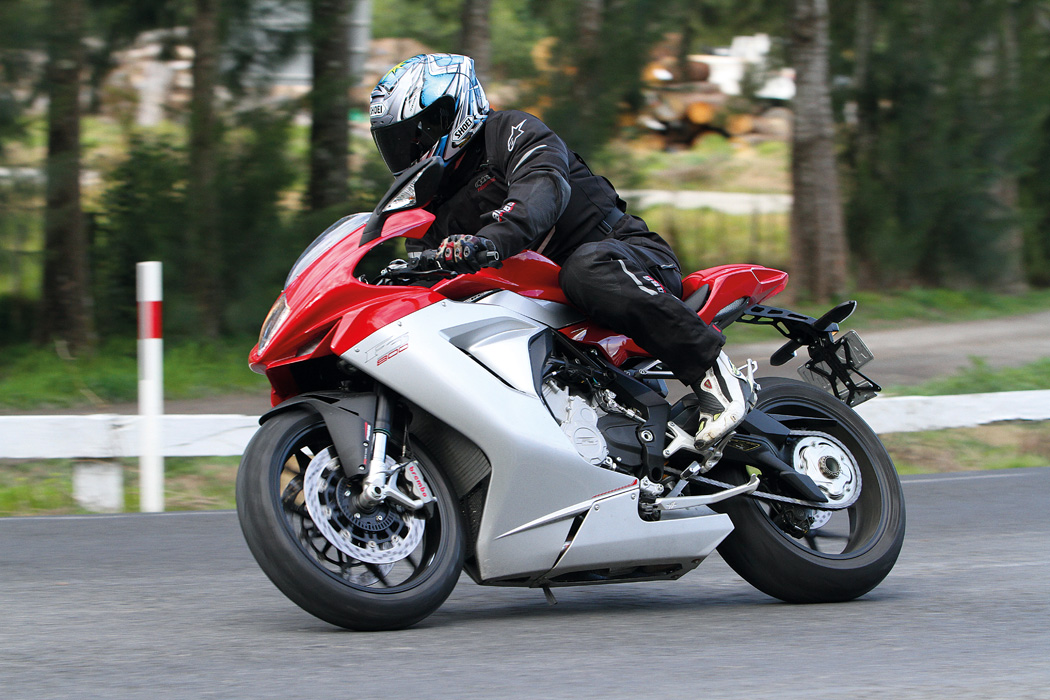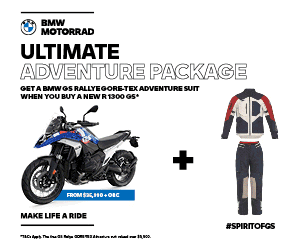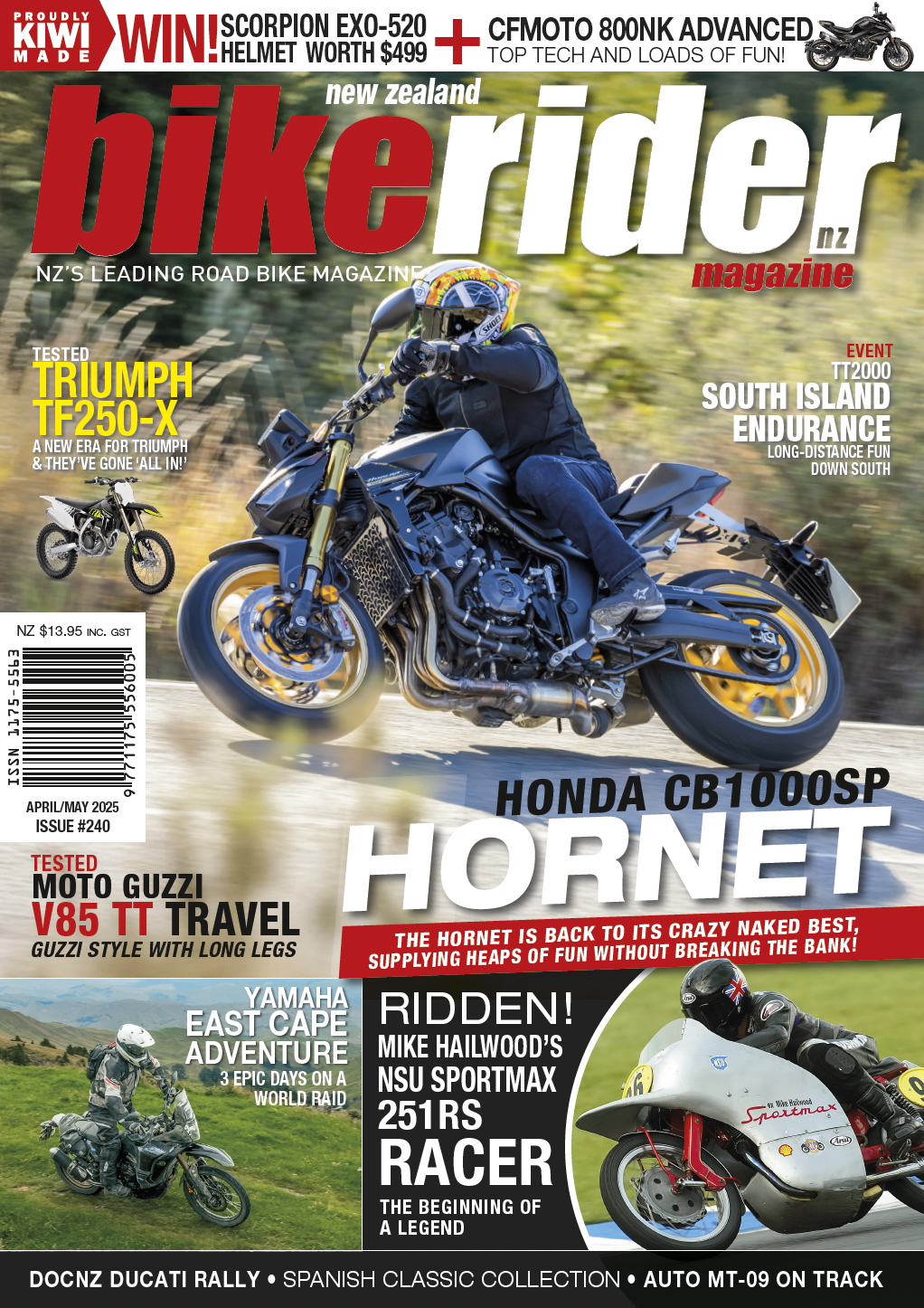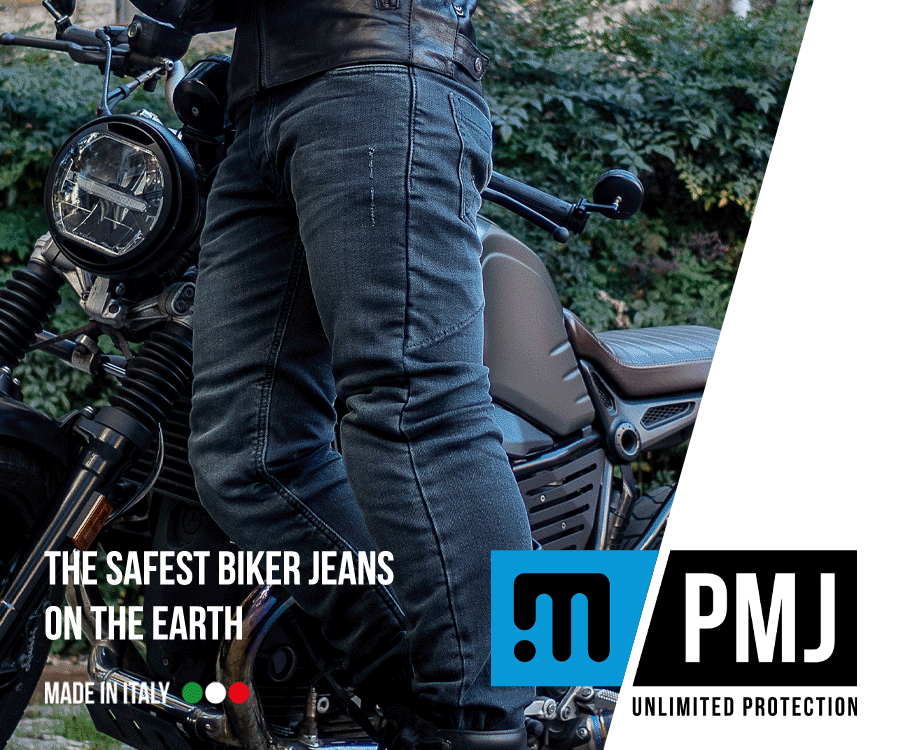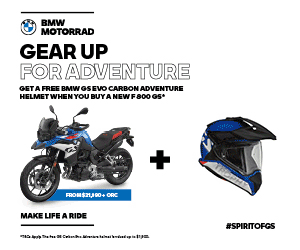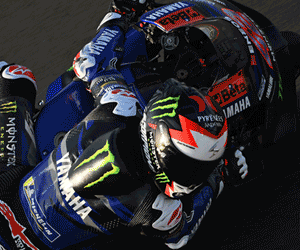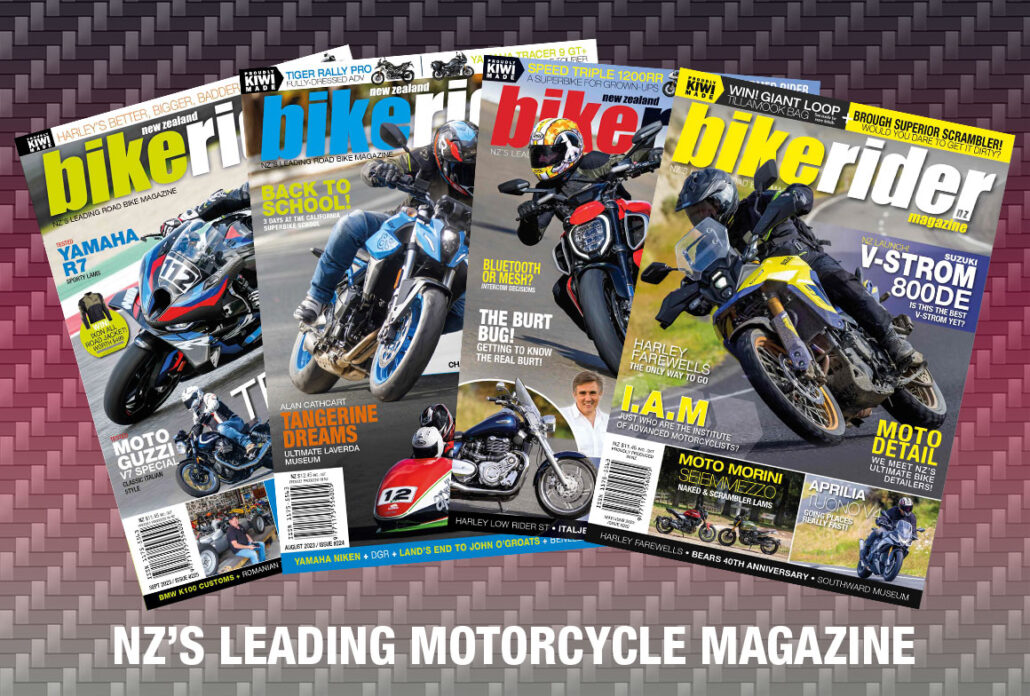Born This Way!
MV Agusta relaunched their racing pedigree with the released of the F3 675, competing and scoring wins on the world stage. Unbeknown to many though, the F3 was always supposed to be like this – an 800cc triple which has just a little bit more everything. But does the F3 800 offer what’s needed on the road? We were keen to find out…
Words: Kev | Pics: Paul
No disrespect to the supersport class machine but the F3 800ABS is the design in its purest form. This bike has the full electronic compliment, the capacity the design was engineered around and although it has no race class per se, it really is something special. It’s literally the size and weight of a supersport bike but has arrogantly shrugged off the engine size restriction to tread its own path.
The F3 800 is the last of the Italian triples we’ve been riding of late, and with the full fairing and sportsbike mapping, it’s also head and shoulders above the rest in outright performance. Does that automatically make it a better bike? As a road bike, no, not necessarily and definitely not automatically. Not fitting into a ‘class’ as it were, simply isn’t that big a deal to many road riders, even with sportsbikes that spend the odd sunny weekend at track days. To survive in the streets takes more than lap times.
The gap between the 600-class and the litre-plus sportsbikes is much wider than the weights and even lap times the fast guys lay down suggest. The 1000cc machines are significantly more physical to ride quickly and the power is much more likely to bite you if you’re not concentrating – or, like a whole bunch of people, it’s just too much when you give it the jandal. On the other hand, the bigger units have beefier mid-ranges, so don’t require constant cog-swapping to do things like passing and getting power down out of bends. The once eagerly contested 750cc class has long disappeared from racing (it used to be the superbike size for multis) but that does not mean there isn’t a case for these bikes making fantastic sportsbikes for those of us on the roads. I’ve always had a sweet spot for bikes like Suzuki’s GSX-R750 and got quite excited about the 800cc triple in F3 form. Was I disappointed? Not a bit.
Italian Flair
MV Agusta have successfully navigated their way through the noise regulations and they have done so in style. Showing most of the other manufacturers how it should be done; the F3 800 sounds so good in stock trim that the only reason you’d need to buy an aftermarket exhaust system is to slice some kilos off by ditching the catalytic converter. Nice touches like the triple-outlet pipes and the sound quality reduces the premium if the first thing you’d do with most bikes is fit a new can.
Needless to say, thumbing the 800cc F3 into life instantly brought a smile to my dial. And that smile didn’t fade all day.
Trying not to wax lyrical, I was more than a little impressed with the fact that, despite being fundamentally the same bike, it felt distinctly different to the F3 675. Other than different calipers up front, different spring rates and damping to manage the increased power and torque – and a new sticker proclaiming that is an 800, it’s a case of a slightly longer stroke and mapping to suit. Not really a case of increasing the capacity, as many would assume, in fact it’s the 675 that was reduced from this, the original intended configuration. No surprise then, that it feels so natural in this format. Better than the F3 675? In my road riding book, yes. More torque and a slight lift in maximum power sure doesn’t do it any harm. The fuelling is much closer to the mark than the F3 675 was, but even that has been sorted and is upgraded with servicing. The 800 just feels less abrupt, possibly assisted by a bit more mass spinning around (counter-rotating crankshaft) inside the cases.
Enough of the comparisons; it’s not the F3 675, this is the new ABS-equipped F3 800 and as such, shouldn’t really be compared with the F2-class bikes too closely. It is the same size, so does feel more like one to ride than a litre-class motorcycle but the triple has, despite its sporty nature, more mid-range than any 600 can emulate. It’s a pretty engaging motorcycle to ride, with the added bonus of feeling unlike anything else. The exclusive feel, as a few brands have realised, goes some way to overcoming the slightly exclusive price. The question of where this machine fits in the marketplace dissolves rapidly as it just fits, not needing any more justification than that. MV Agusta has adopted the multi-platform approach well, learning hard lessons over the past couple of decades and owners. With the smaller version being a huge success, particularly in Europe, and with the naked models also being well received, MV are doing it smart this time and are not relying as heavily on the racing side. Sure, it’s part of their DNA but it’s the road bikes that sell.
Like Suzuki, with their venerable GSX-R750, the likes of MV Agusta and Ducati need applauding for delivering an ‘in-between’ model that, for many riders on the road, will be the perfect blend – the Goldilocks model if you like. If a full-sized road-going superbike seems like overkill to you, this growing class is likely to be your Nirvana.
Handling is razor-sharp, as the diminutive F3 leans on its track pedigree and states the case for a larger capacity version of a smaller bike versus a sleeved-down version of a larger one to give the feel of being right in the sweet spot. The Marzocchi forks and Sachs shock are on the firm side but not excessively so. At a standstill, there is a slightly taughter feel than the F3 675 but on the gas, it’s the added thrust you notice rather than the slightly beefier settings. The differences are care of altered shim stacks to avoid squat with the increased torque, and it seems to be about right for this 75kg body on board. If you weigh a whole lot more or less, your opinion may differ, as will always be the case but as far as the compromise between compliance on the road and feel on the track goes, it’s well chosen for the sports rider. The Brembo monobloc stoppers have good feel, even with the ABS option as on our test bike. They do like having some heat in them, so feel better and better as you go. For some, riding with ABS is like waving a white flag, so they’ll possibly choose to turn it off but for most, the safety net is invaluable and doesn’t intrude until you are pretty close to finding out how far your talent extends. On the road, I doubt many could out-brake the system, particularly as you won’t get any practise attempts before the car pulls out in front of you or you spy some dropped diesel on the road… or even just to gauge the available grip on any day.
The F3 800 also has eight levels of traction control, easily adjusted on-the-fly via a switch on the left clip-on bar. Combining with the now de rigueur mapping choices, or torque settings as MV Agusta refer to them as (three plus a custom one you can personalise), you can set the F3 up to suit in a few seconds.
Open Roads
You are pretty exposed to the elements, unless you are a MotoGP pilot size, as in tiny, so most riders will look over the screen even in a full tuck. Still, it’s a nice-looking fairing with classic MV Agusta styling cues. The front isn’t everyone’s idea of pretty, but it’s hard to find anyone who doesn’t like the overall look of the obviously Italian design. That styling does come at a cost. None of the thoroughbred sportsbikes are much chop for pillions and the F3 800 is definitely no exception. It even looks uncomfortable with a hard, curved pad for the rear perch and pegs dictating a bend that suggests a gymnast was the designer’s significant other. Still, if you’re after a dedicated pillion ride, you wouldn’t have any of the other sportsbikes on the list anyway.
Up front, it’s at the sporty end of the field accommodation-wise, but at least the seat-to-peg and seat-to-bars combination seems to work, feeling natural and getting better as the pace quickens. The super narrow waist makes moving around a cinch and also helps around town with an easy reach even for the shorter rider without needing to close things up too much for the rest of us. Surprisingly, you don’t have massive amounts of weight on your wrists, so even blending with traffic, it’s not too bad. It sounds like an angry beast on a short rope but the electronics stop that from being reflected in the engine’s response. In Sport mode, it’s hardly silky smooth around town but that’s not going to deter an MV Agusta buyer for an instant. The choice to use the rain map is there should you choose but there’s something about the personality the edginess lends to the bike that adds rather than subtracts points for the tone of the exhaust.
Smacking out a claimed 148hp at 13,000rpm, the F3 800 has a top-end that neither the naked MV Agusta triples (125hp) or the F3 675 (128hp) can hold a candle to. What is a little surprising is the F3 800 also produces a bit more torque than its naked classmates, although the 88Nm maximum is produced 2600rpm higher, at 10,600rpm, (the F3 675 produces 71Nm at 10,900rpm) to work more with the top-end hit. Sharing the 79mm stroke with the 675 powerplant, the 800’s longer 54.3mm stroke, versus the 45.9mm of the F3 675, reduces the rev-ceiling by 1400rpm, dictating a revision of the gearing to deliver a similar terminal velocity of around 270km/h. Just a bunch of figures but added up they leave you with a less busy ride and a broader spread of power than the F3 675, a whole different feel to the Rivale/Brutale/Dragster trio and as long as you’re not concerned about belonging to a particular capacity or class, one of the most rewarding sportsbikes out there. It even sounds tougher than the 675. Deeper of voice and even snarlier on over-run, it also comes with a quick-shifter as standard equipment. The only perceived downside on the road would be fuel range but as the engine has a broader spread of useable power, you don’t tend to keep it spinning as much, so we actually bettered the figures we got from the first of the F3 675 models. The mapping updates since may have levelled that but still, another point that the 800 has in its arsenal.
Is it the perfect middleweight sportsbike? If it could also go to the fridge and get a beer, quite possibly. There is stiff competition out there now but the Italian triple is quite different to any of them, as in the Ducati Panigale 899 or Suzuki GSX-R750 (which has been a darling model for years). It offers a level of exclusivity possibly only the Babygale can come close to and the engine configurations are completely different, so if you lean towards multis, the new MV Agusta F3 800 just might be the perfect middleweight sportsbike. So the piggy bank might be a little slimmer, as it’s expectedly pricier than some. That’s the only barrier left really.
Paul’s second opinion: Pretty Damn Fine
I didn’t really fancy folding myself in half and climbing on the F3 800 on a cold winter morning, but Kev told me it was ‘game-changing’ so really, how could I refuse. I was just thinking he’d better be right!
There’s no denying the F3 is one of the prettiest bikes you can set eyes on, even more so once you settle into the saddle. Once there I found it surprisingly comfortable, and the call to the osteopath beforehand to book an appointment was looking like a wasted precaution. Maybe Kev might be telling the truth.
The MotoGP style dash is a peach, giving you all the info you’re likely to need and I didn’t even need a PHD in Italian electronics to work the different mapping and ABS controls, setting the first to N for normal and the latter at R for road. As I say, it was a cold morning so the last thing I needed to do was light up the Pirelli Diablos and fire the Italian and myself backwards through a hedge.
Gone are the days of idiosyncrasies on Italian machines, and thumbing the starter saw the MV burst into life and settle down to a glorious beat from the triple pipes exiting below my right Alpinestar boot. The fly-by-wire throttle is instant, and the additional midrange from the increased capacity makes launching the F3 and getting up to speed much easier and rewarding than on a similar four-cylinder machine. Combine this to the addictive sound emitting from the triple pipes and the OE quick-shifter that lets you flick up the box without buttoning off, and you’ll be searching for quiet roads with no boys in blue, to let you get your fix time and again. Obviously you can play around at the top-end of the rev range and really get the triple wailing, but the midrange is so strong that short-shifting is the way to go on the road, making overtakes a breeze . The Brembos are stunning as you’d imagine, the suspension firm but not overly so, and the handling is sublime; just think and it does it type stuff.
Kev was right; the F3 800 is simply stunning, and dare I say it, ‘game-changing’. It’s Italian exotica with manners; thoroughbred performance with civility; good looking yet practical (kinda). Would I have one in the garage? Hell, no! But I’d have one in the living room though, it really is that good to look at.
Specifications
Price: $26,990+ORC
Engine
Type: Three cylinder, 4-stroke, 12-valve
Timing system: DOHC
Total displacement: 798cc
Compression ratio: 13.3:1
Bore x stroke: 79mm x 54.3mm
Max. power: 108.8kW (148hp) at 13,000rpm.
Max. torque: 88Nm at 10,600rpm
Engine management: EFi with MVICS (Motor & Vehicle Integrated Control System)
with six injectors and fly-by-wire throttle
Clutch: Wet, multi-disc slipper clutch
Transmission: Cassette style six speed, constant mesh
Dimensions and Weight
Wheelbase: 1380mm
Overall length: 2060mm
Overall width: 725mm
Seat height: 805mm
Trail: 99mm
Dry weight: 173kg
Fuel capacity: 16.5l
Performance
Maximum speed (claimed): 269.0 km/h
Frame: Tubular steel trellis
Front suspension: 43mm USD forks with rebound-compression
damping and spring preload adjustment, 125mm travel
Rear suspension: Progressive Sachs single shock with rebound, compression
and spring preload adjustment. Single sided swingarm with 123mm travel
Front brake: Double floating 320mm discs with Brembo radial-type monobloc,
4-piston calipers
Rear brake: Single 220mm steel disc with 2-piston caliper
Front tyre: 120/70 – ZR 17 M/C (58 W)
Rear tyre: 180/55 – ZR 17 M/C (73 W)

